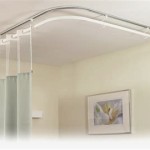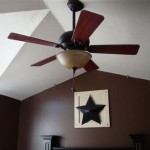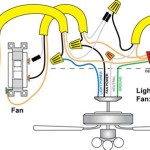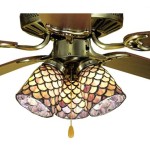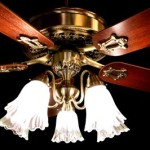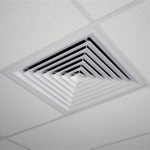How to Make a Vaulted Ceiling Look Better With Paintings
Vaulted ceilings, with their soaring height and architectural grandeur, can dramatically enhance the aesthetic appeal of a space. However, their expansive nature can sometimes feel overwhelming or even stark if not properly addressed. Incorporating paintings strategically can be a powerful tool for transforming a vaulted ceiling from a potential design challenge into a stunning focal point. This article explores techniques and considerations for selecting and placing paintings to optimize the visual impact of a vaulted ceiling and create a more balanced and engaging interior environment. Selecting the appropriate art requires careful thought regarding scale, style, color, and the overall design of the room.
The inherent characteristics of a vaulted ceiling offer unique opportunities for artistic expression. Unlike traditional walls, the angles and height demand visual strategies that compensate for the increased distance between the viewer and the artwork. The key is to leverage the architectural features and manipulate perception to create a cohesive and visually pleasing result. Careful planning and execution are essential to avoid making the space feel unbalanced or cluttered.
Scale and Proportion: Matching Art to the Vault
One of the most critical considerations when integrating paintings into a space with a vaulted ceiling is scale. Choosing artwork that is too small can be easily overwhelmed by the vastness of the ceiling, rendering it insignificant and failing to make a noticeable impact. Conversely, excessively large pieces can dominate the area and create a sense of imbalance or visual congestion. The ideal size will be determined by several factors, including the overall dimensions of the room, the height and angle of the vault, and the distance from which the art will be viewed.
As a general guideline, consider using larger paintings or even groupings of smaller pieces to fill the vertical space effectively. A single, large canvas can anchor a wall and draw the eye upwards, emphasizing the height of the ceiling. Alternatively, a carefully curated gallery wall arrangement can provide visual interest and break up the monotony of a large, blank surface. When selecting multiple pieces, ensure that they are visually cohesive, either through a shared theme, color palette, or style. Consider the golden ratio as a resource for developing pleasing proportions.
Before committing to any purchases, it is prudent to create mock-ups or use digital rendering tools to visualize how the paintings will look in the space. This allows for experimentation with different sizes and arrangements, ensuring that the selected artwork complements the architecture and contributes to the overall aesthetic harmony of the room. Remember to account for the frame when calculating the final dimensions of the artwork.
Ultimately, the goal is to achieve a sense of proportion that feels natural and balanced. This requires careful consideration of the relationship between the art, the ceiling, and the surrounding environment. Avoid the temptation to simply fill the space with art; instead, focus on selecting pieces that will enhance the architectural features and create a visually appealing composition.
Strategic Placement: Maximizing Visual Impact
The placement of paintings on walls beneath a vaulted ceiling is as important as the selection of the art itself. The height and angles of the ceiling can influence how the artwork is perceived, and strategic positioning can help to correct visual imbalances and draw the eye to specific areas. Consider the lines of sight from various vantage points within the room and ensure that the paintings are positioned to be easily viewed and appreciated.
One common approach is to hang paintings at eye level, which is typically considered to be around 57 to 60 inches from the floor to the center of the artwork. However, this guideline may need to be adjusted in rooms with vaulted ceilings. Because the ceiling draws the eye upwards, it may be beneficial to hang the paintings slightly higher than usual to maintain a visual connection between the art and the architecture. Experiment with different heights to find a placement that feels balanced and natural.
Another consideration is the spacing between paintings, particularly when creating a gallery wall arrangement. Adequate space between each piece allows the individual artworks to breathe and prevents the arrangement from feeling cluttered or overwhelming. As a general rule, aim for a spacing of around 2 to 6 inches between paintings, depending on their size and the overall aesthetic you are trying to achieve.
The angles of the vaulted ceiling can also influence the placement of art. If the ceiling slopes dramatically, consider hanging paintings on the lower portions of the wall to avoid a sense of imbalance. Alternatively, you could use the paintings to accentuate the angle of the ceiling by placing them strategically along its lines. This can create a dynamic and visually interesting effect.
Lighting is another crucial factor to consider when determining the placement of paintings. Ensure that the artwork is adequately illuminated, either by natural light or strategically placed artificial lighting. Proper lighting will enhance the colors and textures of the paintings and make them more visible and engaging. Consider using directional lighting to highlight specific areas of the artwork and create a sense of depth and dimension.
Style and Color: Creating Visual Harmony
The style and color of the paintings selected for a space with a vaulted ceiling should complement the overall aesthetic of the room and contribute to a sense of visual harmony. Consider the existing furniture, décor, and color palette when choosing artwork to ensure that it integrates seamlessly into the environment. The goal is to create a cohesive and visually pleasing composition that enhances the overall design of the space.
If the room has a traditional or formal style, consider selecting paintings that reflect this aesthetic. Classic landscapes, portraits, or still life paintings can add a touch of elegance and sophistication. Choose frames that complement the style of the artwork and the décor of the room. For instance, ornate gold frames can enhance the richness of a traditional painting, while simple wooden frames can provide a more understated and contemporary look.
For more modern or contemporary spaces, consider selecting abstract or minimalist artwork. These styles can add a touch of visual interest without overwhelming the space. Choose bold colors or striking geometric shapes to create a focal point and add a sense of energy and vibrancy. Metal or frameless canvases can complement the clean lines and minimalist aesthetic of a modern room.
The color palette of the paintings should also be carefully considered. Choose colors that complement the existing color scheme of the room. If the room has neutral walls, consider using paintings with pops of color to add visual interest. Alternatively, if the room has bold or vibrant walls, consider selecting paintings with more muted or complementary colors to create a sense of balance.
Ultimately, the choice of style and color is a matter of personal preference. However, it is important to consider the overall aesthetic of the room and choose paintings that will enhance the design and create a cohesive visual experience. By carefully selecting artwork that complements the architecture and décor, it is possible to transform a vaulted ceiling from a potential design challenge into a stunning focal point.
Beyond the aesthetic considerations, remember the practical aspects. Ensuring that the method used to hang the artwork is secure and appropriate for the weight of the pieces is vitally important, especially considering the height. Employ professional installation services if you are unsure about your ability to safely and effectively hang the paintings.
By considering the scale, placement, style, and color of paintings, one can effectively enhance the beauty of a vaulted ceiling and transform a room into a more aesthetically pleasing and visually engaging space. This thoughtful integration results in a balanced and harmonious environment where art and architecture work together seamlessly.

13 Unbeatable Vaulted Ceiling Ideas 2025 Checkatrade

13 Unbeatable Vaulted Ceiling Ideas 2025 Checkatrade

Vaulted Angled Ceilings What Color They Should Be Part 3

Vaulted Angled Ceilings What Color They Should Be Part 3

10 Ways To Make A High Ceilinged Room Look Cozier

Creative Ceiling Decorating Ideas

Decorating Walls With Vaulted Ceilings Addicted 2

Vaulted Ceiling Options Addicted 2 Decorating

22 Vaulted Ceiling Ideas For An Open And Inviting Home Alittledelightful

How To Wallpaper Or Paint Angled Walls And Sloped Ceilings
Related Posts

